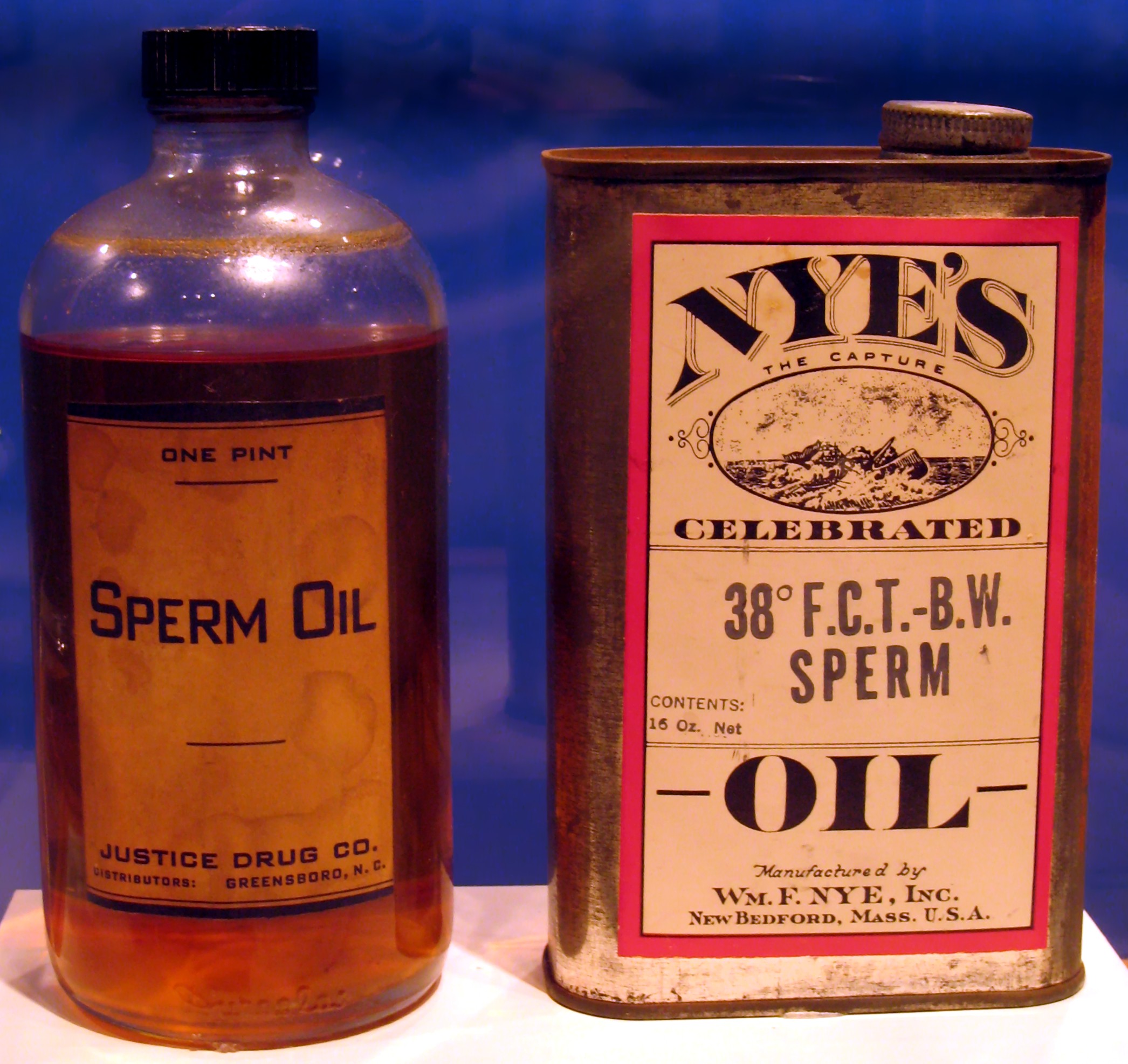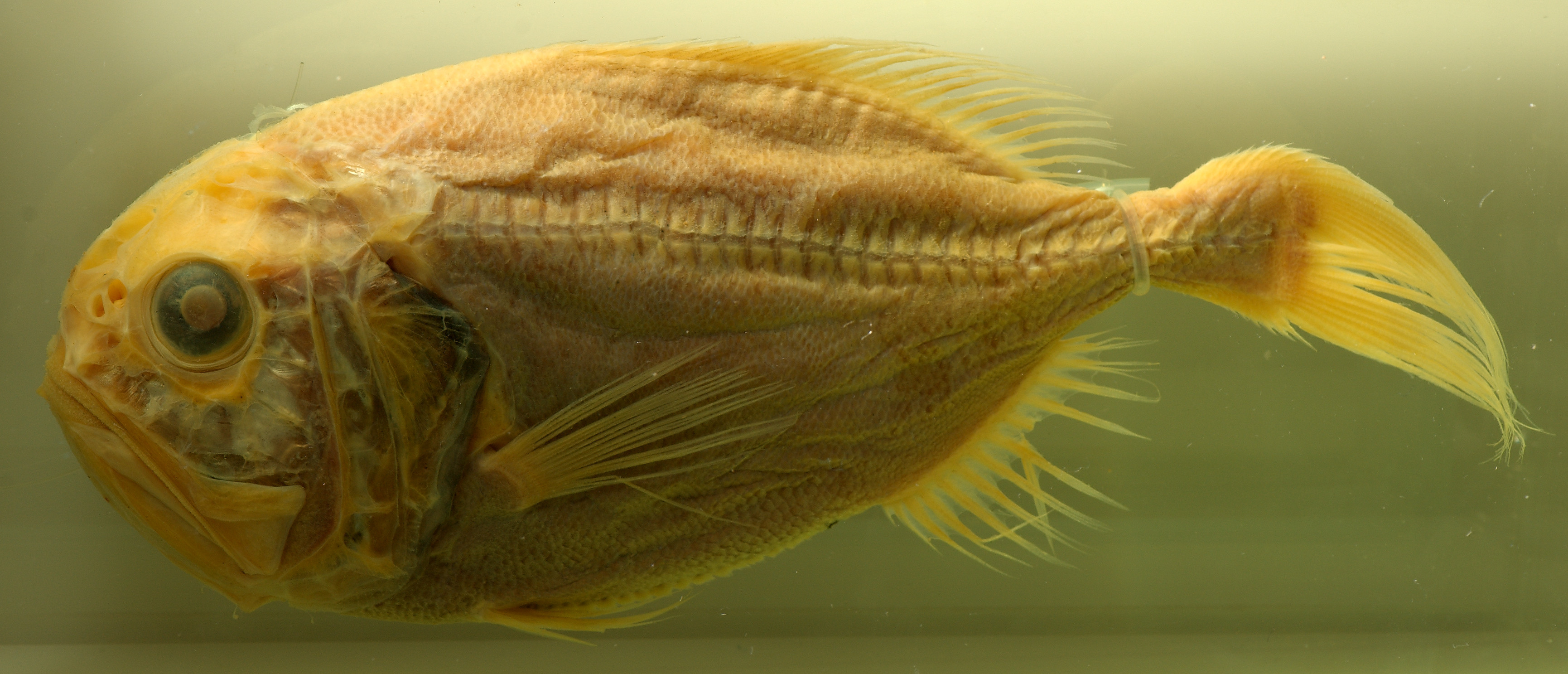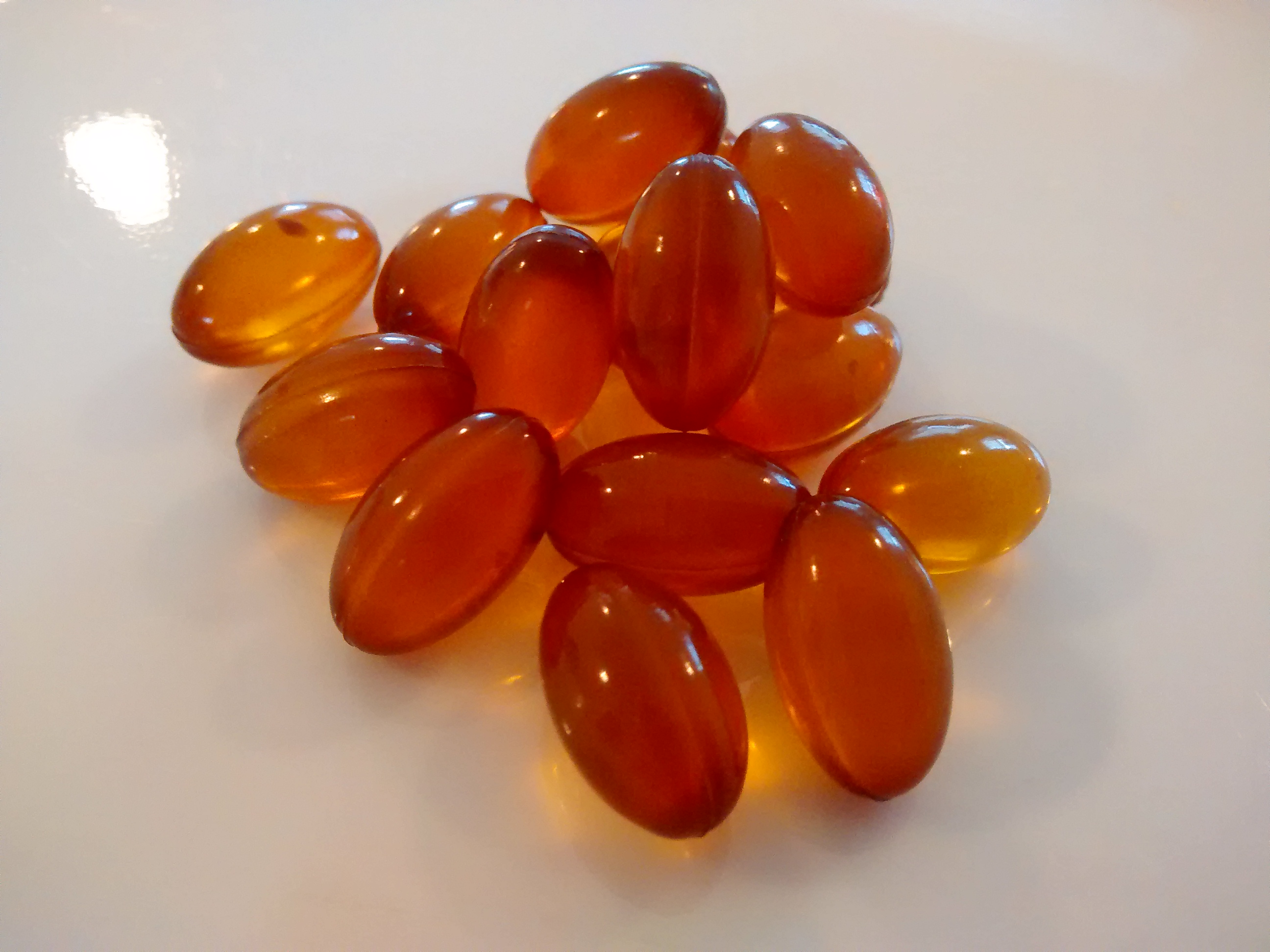|
Wax Ester
A wax ester (WE) is an ester of a fatty acid and a fatty alcohol. Wax esters are the main components of three commercially important waxes: carnauba wax, candelilla wax, and beeswax.. Wax esters are formed by combining one fatty acid with one fatty alcohol: :RCOOH + R'OH RCOOR' + H2O Some wax esters are saturated, and others contain unsaturated centers. Saturated wax esters have higher melting points and are more likely to be solid at room temperature. Unsaturated wax esters have a lower melting point and are more likely to be liquid at room temperature. Both fatty acids and fatty alcohols may be made of different carbon chain length. In the end, there are many different possible combinations of fatty acids and fatty alcohols and each combination will have a unique set of properties in terms of steric orientation and phase transition. The chain lengths of fatty acids and fatty alcohols in naturally occurring wax esters vary. The fatty acids in wax esters derived from plant ... [...More Info...] [...Related Items...] OR: [Wikipedia] [Google] [Baidu] |
Sperm Oil
Sperm oil (see also: Spermaceti) is a waxy liquid obtained from sperm whales. It is a clear, yellowish liquid with a very faint odor. Sperm oil has a different composition from common whale oil, obtained from rendered blubber. Although it is traditionally called an "oil", it is technically a liquid wax. It is composed of wax esters with a small proportion of triglycerides, an ester of an unsaturated fatty acid, and a branched-chain fatty alcohol. It is a natural antioxidant and heat transfer agent. In the late-18th and early-19th centuries, sperm oil was prized as an illuminant for its bright, odorless flame and as a lubricant for its low viscosity and stability. It was supplanted in the late 19th century by less expensive alternatives such as kerosene and petroleum-based lubricants. With the 1987 international ban on whaling, sperm oil is no longer legally sold. The oil from bottlenose whales was sometimes called "Arctic sperm oil." It was cheaper than but inferior to true ... [...More Info...] [...Related Items...] OR: [Wikipedia] [Google] [Baidu] |
Orange Roughy
The orange roughy (''Hoplostethus atlanticus''), also known as the red roughy, slimehead and deep sea perch, is a relatively large deep-sea fish belonging to the slimehead family (Trachichthyidae). It is bathypelagic, found in cold (), deep () waters of the Western Pacific Ocean, eastern Atlantic Ocean (from Iceland to Morocco; and from Walvis Bay, Namibia, to off Durban, South Africa), Indo-Pacific (off New Zealand and Australia), and in the eastern Pacific off Chile. The orange roughy is notable for its extraordinary lifespan, attaining over 200 years. The fish has a bright, brick red color, fading to a yellowish-orange after death. Like other slimeheads, orange roughy is slow-growing and late to mature, resulting in a very low stock resilience, making them extremely susceptible to overfishing. Despite this, the species is important to commercial deep- trawl fisheries; many stocks (especially those off New Zealand and Australia, which were first exploited in the late 1970s) ... [...More Info...] [...Related Items...] OR: [Wikipedia] [Google] [Baidu] |
Escolar
The escolar, ''Lepidocybium flavobrunneum'', a species of fish in the family Gempylidae, is found in deep (200–885 metres, or 656–2,904 ft) tropical and temperate waters around the world. It is also known as snake mackerel, ' ( Hawaiian, sometimes written '), and is sometimes sold as " butterfish" or " white tuna". Biology The escolar is dark brown, growing darker with age until it is quite black. It is a fast-swimming fish with a prominent lateral keel and four to six finlets after the anal and second dorsal fins. Escolar can grow to over in length. Like its relative the oilfish (''Ruvettus pretiosus''), escolar cannot metabolize the wax esters (gempylotoxin) naturally found in its diet. This gives the escolar an oil content of 14–25% in its flesh. Health effects The escolar's wax ester content can cause keriorrhea (Greek: flow of wax), also called gempylotoxism or gempylid fish poisoning. Symptoms range from stomach cramps to rapid loose bowel mov ... [...More Info...] [...Related Items...] OR: [Wikipedia] [Google] [Baidu] |
Oilfish
Oilfish (''Ruvettus pretiosus'') are a species of snake mackerel with a cosmopolitan distribution in tropical and temperate oceans. They can be found at depths from , but most often between . Oilfish can grow to a length of , though most do not exceed . It is the only known member of its genus. Description Oilfish are large, fusiform fish which often grow to and a maximum of . Other distinctive features of this fish include the large fangs, rough scales, two pairs of finlets, and a uniformly brown coloration. Oilfish meat is extremely oily, containing high lipid concentrations. Though edible, the oil mainly consists of wax esters, which makes the meat act as a laxative if consumed in large quantities. Habitat and ecology Oilfish are distributed throughout tropical and temperate waters across the world, being recorded in the Atlantic, Indian, and Pacific oceans, including the Mediterranean Sea. They are found in the deep water benthic environments of continental slopes an ... [...More Info...] [...Related Items...] OR: [Wikipedia] [Google] [Baidu] |
Keriorrhea
Keriorrhea is the production of greasy, orange-colored stools which results from the consumption of indigestible wax esters found in oilfish and escolar. See also * Steatorrhea Steatorrhea (or steatorrhoea) is the presence of excess fat in Human feces, feces. Stools may be bulky and difficult to flush, have a pale and oily appearance, and can be especially foul-smelling. An oily anal leakage or some level of fecal incon ... * Rectal discharge References Feces Diarrhea Gastrointestinal tract disorders Steatorrhea-related diseases {{Symptom-stub ... [...More Info...] [...Related Items...] OR: [Wikipedia] [Google] [Baidu] |
Docosahexaenoic Acid
Docosahexaenoic acid (DHA) is an omega−3 fatty acid that is an important component of the human brain, cerebral cortex, skin, and retina. It is given the fatty acid notation 22:6(''n''−3). It can be synthesized from alpha-linolenic acid or obtained directly from maternal milk (breast milk), fatty fish, fish oil, or algae oil. The consumption of DHA (e.g., from fatty fish such as salmon, herring, mackerel and sardines) contributes to numerous physiological benefits, including cognition. As a component of neuronal membranes, the function of DHA is to support neuronal conduction and to allow the optimal functioning of neuronal membrane proteins (such as receptors and enzymes). Structurally, DHA is a carboxylic acid (-''oic acid'') with a 22- carbon chain (''docosa-'' derives from the Ancient Greek for 22) and six (''hexa-'') '' cis'' double bonds (''-en-''); with the first double bond located at the third carbon from the omega end. Its trivial name is ''cervonic acid'' (from ... [...More Info...] [...Related Items...] OR: [Wikipedia] [Google] [Baidu] |
Eicosapentaenoic Acid
Eicosapentaenoic acid (EPA; also icosapentaenoic acid) is an omega−3 fatty acid. In physiological literature, it is given the name 20:5(''n''−3). It also has the trivial name timnodonic acid. In chemical structure, EPA is a carboxylic acid with a 20-carbon chain and five '' cis'' double bonds; the first double bond is located at the third carbon from the omega end. EPA is a polyunsaturated fatty acid (PUFA) that acts as a precursor for prostaglandin-3 (which inhibits platelet aggregation), thromboxane-3, and leukotriene-5 eicosanoids. EPA is both a precursor and the hydrolytic breakdown product of eicosapentaenoyl ethanolamide (EPEA: C22 H35 NO2; 20:5,''n''−3). Although studies of fish oil supplements, which contain both docosahexaenoic acid (DHA) and EPA, have failed to support claims of preventing heart attacks or strokes, a recent multi-year study of Vascepa ( ethyl eicosapentaenoate, the ethyl ester of the free fatty acid), a prescription drug containing onl ... [...More Info...] [...Related Items...] OR: [Wikipedia] [Google] [Baidu] |
Triglyceride
A triglyceride (from '' tri-'' and '' glyceride''; also TG, triacylglycerol, TAG, or triacylglyceride) is an ester derived from glycerol and three fatty acids. Triglycerides are the main constituents of body fat in humans and other vertebrates as well as vegetable fat. They are also present in the blood to enable the bidirectional transference of adipose fat and blood glucose from the liver and are a major component of human skin oils. Many types of triglycerides exist. One specific classification focuses on saturated and unsaturated types. Saturated fats have ''no'' C=C groups; unsaturated fats feature one or more C=C groups. Unsaturated fats tend to have a lower melting point than saturated analogues; as a result, they are often liquid at room temperature. Chemical structure The three fatty acids substituents can be the same, but they are usually different. The positions of the three fatty acids are specified using stereospecific numbering as sn-1, sn-2, and sn- ... [...More Info...] [...Related Items...] OR: [Wikipedia] [Google] [Baidu] |
Carboxylesterase
The enzyme carboxylesterase (or carboxylic-ester hydrolase, EC 3.1.1.1; systematic name carboxylic-ester hydrolase) catalysis, catalyzes reactions of the following form: :a Ester, carboxylic ester + H2O \rightleftharpoons an Alcohol (chemistry), alcohol + a carboxylate Most enzymes from this group are serine hydrolases belonging to the superfamily of proteins with α/β hydrolase fold. Some exceptions include an esterase with beta-lactamase, β-lactamase-like structure (). Carboxylesterases are widely distributed in nature, and are common in mammalian liver. Many participate in Drug metabolism#Phase I .E2.80.93 modification, phase I metabolism of xenobiotics such as toxins or drugs; the resulting carboxylates are then conjugation (biochemistry), conjugated by other enzymes to increase solubility and eventually excreted. The essential polyunsaturated fatty acid arachidonic acid (AA Carbon, C20Hydrogen, H32Oxygen, O2; 20:Double bond, 4, Omega-6 fatty acid, n-6), formed by the synth ... [...More Info...] [...Related Items...] OR: [Wikipedia] [Google] [Baidu] |
Lipase
In biochemistry, lipase ( ) refers to a class of enzymes that catalyzes the hydrolysis of fats. Some lipases display broad substrate scope including esters of cholesterol, phospholipids, and of lipid-soluble vitamins and sphingomyelinases; however, these are usually treated separately from "conventional" lipases. Unlike esterases, which function in water, lipases "are activated only when adsorbed to an oil–water interface". Lipases perform essential roles in digestion, transport and processing of dietary lipids in most, if not all, organisms. Structure and catalytic mechanism Classically, lipases catalyse the hydrolysis of triglycerides: \begin \text + \ce &\longrightarrow \text + \text \\[4pt] \text + \ce &\longrightarrow \text + \text \\[4pt] \text + \ce &\longrightarrow \text + \text \end Lipases are serine hydrolases, i.e. they function by transesterification generating an acyl serine intermediate. Most lipases act at a specific position on the glycerol ... [...More Info...] [...Related Items...] OR: [Wikipedia] [Google] [Baidu] |
Buoyancy
Buoyancy (), or upthrust, is the force exerted by a fluid opposing the weight of a partially or fully immersed object (which may be also be a parcel of fluid). In a column of fluid, pressure increases with depth as a result of the weight of the overlying fluid. Thus, the pressure at the bottom of a column of fluid is greater than at the top of the column. Similarly, the pressure at the bottom of an object submerged in a fluid is greater than at the top of the object. The pressure difference results in a net upward force on the object. The magnitude of the force is proportional to the pressure difference, and (as explained by Archimedes' principle) is equivalent to the weight of the fluid that would otherwise occupy the submerged volume of the object, i.e. the Displacement (fluid), displaced fluid. For this reason, an object with average density greater than the surrounding fluid tends to sink because its weight is greater than the weight of the fluid it displaces. If the objec ... [...More Info...] [...Related Items...] OR: [Wikipedia] [Google] [Baidu] |






